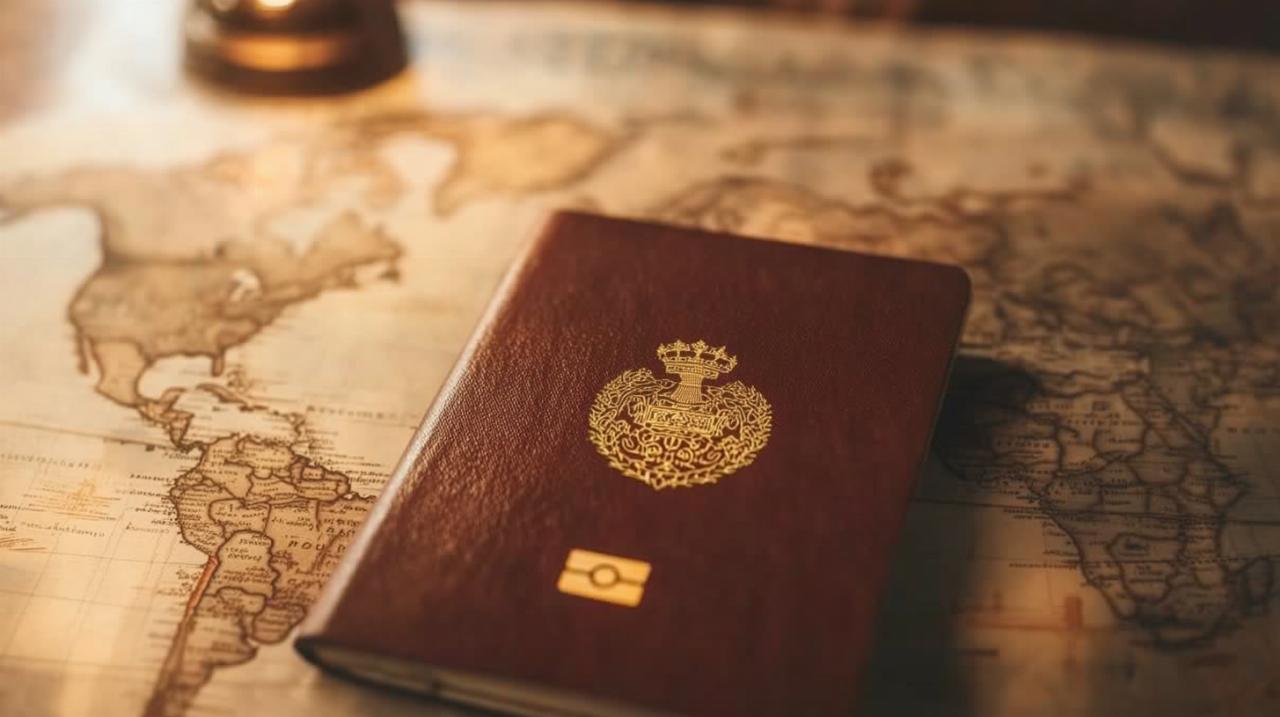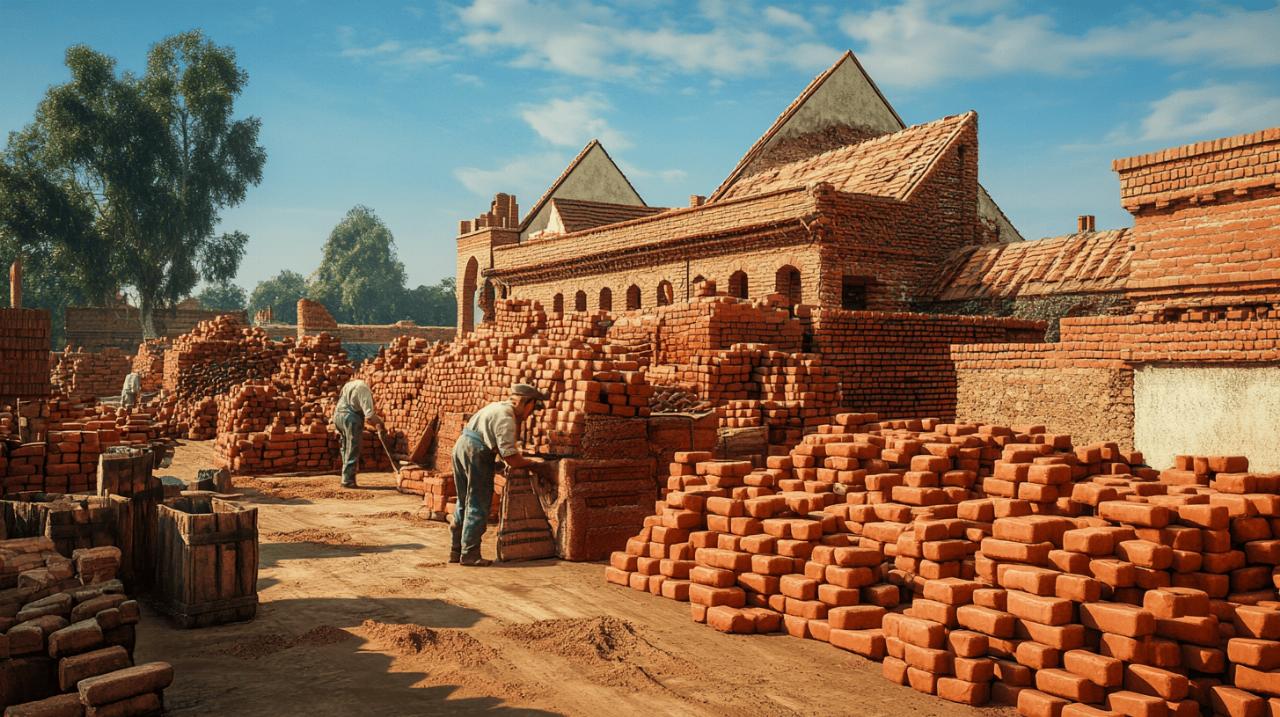Navigating the intricacies of passport documentation can feel like quite the undertaking, especially when regulations shift and new systems come into play. For those connected to Morocco, whether through citizenship, family ties, or travel plans, staying abreast of the latest requirements is absolutely essential. This guide aims to demystify the recent modifications to Moroccan passport procedures, offering a clear pathway through the updated landscape of documentation, security features, and application protocols. Understanding these changes ensures a smoother experience, whether you're renewing an existing document or applying for the very first time.
What's Changed in the Moroccan Passport Application System
New digital requirements and online portal updates
The shift towards digital administration has transformed how citizens interact with governmental services, and the Moroccan passport system is no exception. Recent updates have introduced enhanced online portals designed to streamline the entire application journey. Applicants now encounter a more intuitive interface that guides them through each stage, from initial data entry to appointment scheduling. These digital platforms demand a higher degree of accuracy in the information provided, as automated systems cross-reference details with national databases to ensure consistency. This modernisation reflects a broader commitment to efficiency, reducing the margin for human error and speeding up processing times considerably. The emphasis on digital engagement means that applicants must familiarise themselves with the online environment, ensuring they have reliable internet access and the necessary technical literacy to navigate the system confidently.
One notable aspect of the updated digital framework involves the integration of biometric data collection at earlier stages of the application process. This requirement aligns with international standards for secure identification and helps to combat identity fraud. Applicants are now prompted to upload high-quality photographs that meet stringent specifications, and in some cases, preliminary fingerprint data may be requested digitally before an in-person appointment. The online portal also provides real-time updates on application status, allowing individuals to track their progress without the need for repeated telephone enquiries or visits to administrative offices. This transparency is a significant improvement, offering peace of mind and reducing unnecessary anxiety during what can be a stressful period. The system's capacity to handle large volumes of applications simultaneously has also been enhanced, minimising delays during peak periods such as holiday seasons or school vacation times.
Revised processing times and collection procedures
Processing times have seen a notable shift under the new system, with standard applications now typically completed within a more predictable timeframe. While the exact duration can vary depending on individual circumstances and the volume of applications being handled, the general expectation is that routine cases will be resolved within a matter of weeks rather than the months that some applicants previously experienced. This improvement stems from the streamlined digital workflow and the introduction of more efficient internal review processes. However, it remains crucial for applicants to plan ahead, particularly if travel is imminent, as unexpected complications or the need for additional documentation can still introduce delays. Express services may be available for those facing urgent travel requirements, though these typically incur higher fees and require thorough justification of the need for expedited processing.
Collection procedures have also undergone refinement, with many applicants now able to choose between picking up their new passport in person or opting for secure postal delivery. The in-person collection option remains popular, as it provides immediate confirmation that the document has been received and allows for any last-minute queries to be addressed on the spot. However, the postal service offers convenience for those unable to travel to collection centres, particularly individuals residing in remote areas or those with mobility challenges. Security measures surrounding postal delivery are rigorous, with tracking systems in place to ensure that documents reach their intended recipients without interception. Applicants must present identification when collecting their passport in person, and similar verification steps are required when receiving delivery by post, ensuring that the document does not fall into the wrong hands. These procedures reflect a careful balance between convenience and security, recognising the sensitive nature of passport documentation.
Understanding the Enhanced Security Features in Modern Moroccan Passports
Biometric data integration and privacy considerations
The incorporation of biometric technology into modern Moroccan passports represents a significant leap forward in document security. Biometric data, which includes fingerprints and facial recognition information, is embedded within the passport's electronic chip, creating a unique digital signature that is exceedingly difficult to replicate or forge. This technology serves as a robust deterrent against identity theft and fraudulent use of travel documents, offering both the holder and immigration authorities greater confidence in the document's authenticity. The biometric chip can be read by specialised scanners at border crossings, enabling swift and accurate verification of the traveller's identity without the need for extensive manual checks. This capability not only enhances security but also expedites passage through immigration controls, reducing waiting times and improving the overall travel experience.
Privacy considerations are paramount when dealing with biometric data, and Moroccan authorities have implemented stringent protocols to safeguard this sensitive information. The data stored within the passport chip is encrypted, and access is restricted to authorised personnel using secure systems. Applicants are assured that their biometric information will not be shared with third parties without explicit consent, except in cases where legal obligations require disclosure, such as criminal investigations or national security matters. The collection and storage of biometric data are governed by legislation that aligns with international privacy standards, ensuring that individuals' rights are respected throughout the process. Transparency regarding how this data is used and protected is a key component of the system, with clear information provided to applicants about the scope and purpose of biometric collection. This approach seeks to build trust and confidence in the new technology while maintaining the highest standards of personal data protection.
Updated passport design elements and authentication methods
Beyond biometric integration, the physical design of Moroccan passports has been refreshed to incorporate advanced security features that are visible to the naked eye as well as detectable by specialised equipment. These elements include intricate watermarks, holographic images, and microprinting that are extremely challenging to reproduce accurately. The use of specially formulated inks that change colour under different lighting conditions adds another layer of authentication, making it easier for border officials to identify genuine documents quickly. The pages themselves are constructed from durable, high-quality materials designed to withstand the rigours of frequent travel while remaining resistant to tampering or alteration. The overall aesthetic of the passport reflects national identity, with culturally significant motifs and symbols integrated into the design in a manner that is both visually appealing and functionally secure.
Authentication methods extend to the electronic components of the passport as well, with the chip containing additional layers of encrypted data that can be verified through international databases. This connectivity allows for real-time cross-referencing with border control systems around the world, ensuring that the passport has not been reported as lost or stolen and that the holder is authorised to travel. The combination of physical and digital security features creates a comprehensive defence against fraud, making modern Moroccan passports among the most secure travel documents available. Regular updates to these features ensure that the passports remain ahead of emerging threats, with ongoing collaboration between Moroccan authorities and international security organisations to share best practices and develop new technologies. This proactive approach to security reflects a commitment to protecting citizens and maintaining the integrity of national borders in an increasingly interconnected world.
Step-by-Step Guide to Applying Under the New System
Required documentation and eligibility criteria
 Before commencing the application process, it is essential to gather all necessary documentation and confirm eligibility. Applicants must provide proof of Moroccan citizenship, typically in the form of a national identity card or a previous passport if renewing. Birth certificates are a fundamental requirement, and these must be official copies obtained from the original registry office where the birth was recorded. It is worth noting that there is no central birth register in Morocco, meaning that applicants may need to contact the specific registry office relevant to their place of birth. The acceptable format is generally the 'copie intégrale d'un acte de naissance', which provides comprehensive details about the birth event. Any discrepancies or errors on the birth certificate will necessitate reissuance before the passport application can proceed, so it is prudent to review this document carefully well in advance.
Before commencing the application process, it is essential to gather all necessary documentation and confirm eligibility. Applicants must provide proof of Moroccan citizenship, typically in the form of a national identity card or a previous passport if renewing. Birth certificates are a fundamental requirement, and these must be official copies obtained from the original registry office where the birth was recorded. It is worth noting that there is no central birth register in Morocco, meaning that applicants may need to contact the specific registry office relevant to their place of birth. The acceptable format is generally the 'copie intégrale d'un acte de naissance', which provides comprehensive details about the birth event. Any discrepancies or errors on the birth certificate will necessitate reissuance before the passport application can proceed, so it is prudent to review this document carefully well in advance.
Additional documentation may be required depending on individual circumstances, such as marriage certificates for those who have married, or legal documents relating to name changes. It should be noted that while Morocco allows name changes via a court-issued deed poll, changes to the surname require approval from the Ministry of the Interior and can take at least six months to finalise. Women traditionally do not change their surnames upon marriage, which simplifies documentation in many cases. For minors, parental consent is mandatory, and both parents' identity documents may need to be presented. In cases where a child is deemed illegitimate under Moroccan law, the documentation requirements differ, with unmarried mothers receiving a birth letter from the hospital rather than a standard birth certificate. Adoption and surrogacy are illegal in Morocco, meaning that applicants cannot use such documentation to establish parental relationships for passport purposes. Understanding these nuances is critical to ensuring that the application proceeds smoothly without delays caused by incomplete or inappropriate documentation.
Booking Appointments and Navigating the Application Portal
Once all documentation is in order, the next step involves accessing the online application portal to initiate the process. The portal requires users to create an account, providing basic personal information and setting up secure login credentials. After logging in, applicants are guided through a series of forms where they must input detailed information about their identity, place of birth, family background, and any previous passports held. Accuracy is paramount at this stage, as errors can lead to delays or even rejection of the application. The system often includes validation checks that flag inconsistencies, prompting users to review and correct their entries before proceeding. Uploading the required documents in the specified formats is a critical part of the online process, and applicants should ensure that scanned copies are clear, legible, and meet the file size and format requirements outlined by the portal.
After completing the online forms and uploading documents, applicants are prompted to book an in-person appointment at a designated passport office or collection centre. Appointment availability can vary, with urban centres typically offering more frequent slots than rural locations. It is advisable to book well in advance, particularly during busy periods when demand for appointments is high. During the appointment, biometric data such as fingerprints and a photograph will be captured by trained personnel using specialised equipment. This data is immediately linked to the electronic application, ensuring seamless integration into the passport production process. Applicants should bring original copies of all documents submitted online, as these will be verified against the uploaded versions. The appointment also provides an opportunity to address any questions or concerns with passport office staff, who can offer guidance on the next steps and expected timelines. After the appointment, the application enters the review and production phase, with updates provided via the online portal and, in some cases, by email or SMS notification.
Common questions about the updated moroccan passport regulations
Renewal process changes and validity periods
Renewing a Moroccan passport under the updated system follows a similar path to a first-time application, though there are some distinctions that can simplify the process. Individuals renewing their passports are typically required to provide fewer supporting documents, as their identity and citizenship have already been established through the previous issuance. However, it remains essential to present the expiring or expired passport, along with a current national identity card, to confirm that the applicant's details remain consistent. The renewal process also utilises the online portal, allowing applicants to update any personal information that may have changed since the last issuance, such as address or contact details. Biometric data must be recaptured during the in-person appointment, even for renewals, to ensure that the electronic chip contains the most current information.
Validity periods for Moroccan passports have not seen significant changes under the new regulations, with standard adult passports typically valid for five or ten years, depending on the type issued. However, it is crucial to be aware that many countries impose additional entry requirements related to passport validity. For instance, when travelling to certain destinations, a passport must be valid for at least three months beyond the intended departure date. This requirement is particularly relevant for Moroccan citizens visiting countries within the European Union or other regions with strict immigration protocols. Damaged passports, even if technically still within their validity period, may not be accepted for travel, as border officials can refuse entry if the document's integrity is compromised. Applicants should inspect their passports regularly and initiate renewal procedures if signs of wear or damage become apparent, avoiding the risk of being turned away at a border crossing.
Fees, payment methods and special circumstances
The cost of obtaining or renewing a Moroccan passport varies depending on several factors, including the type of passport being issued and the processing speed selected. Standard fees are set by the relevant governmental authority and are subject to periodic review, meaning that applicants should verify the current charges through official channels before beginning the application process. Payment is typically made online via the application portal, with a range of methods accepted, including credit and debit cards, and in some cases, electronic bank transfers. Receipts are generated automatically upon successful payment, and these should be retained as proof of transaction in case of any discrepancies or queries during the application review.
Special circumstances can influence both the cost and the procedure for obtaining a passport. For instance, individuals applying for expedited processing due to urgent travel needs may face higher fees, reflecting the additional resources required to prioritise their application. Children and minors may have different fee structures compared to adults, and there are specific provisions for individuals with disabilities or those residing in remote areas who may face challenges accessing passport offices. In such cases, mobile biometric units or alternative arrangements may be made to facilitate the application process, though these services may also incur additional costs. Applicants facing financial hardship should enquire about any available assistance programmes or fee waivers, as some provisions exist to ensure that economic barriers do not prevent individuals from obtaining essential travel documentation. Understanding the full scope of fees and available payment options ensures that applicants are financially prepared and can complete the process without unexpected obstacles.






